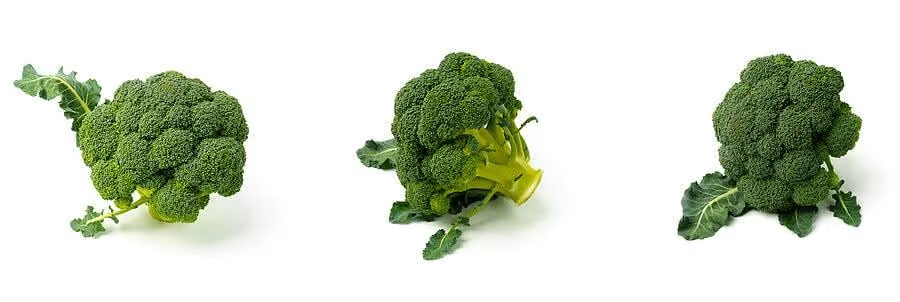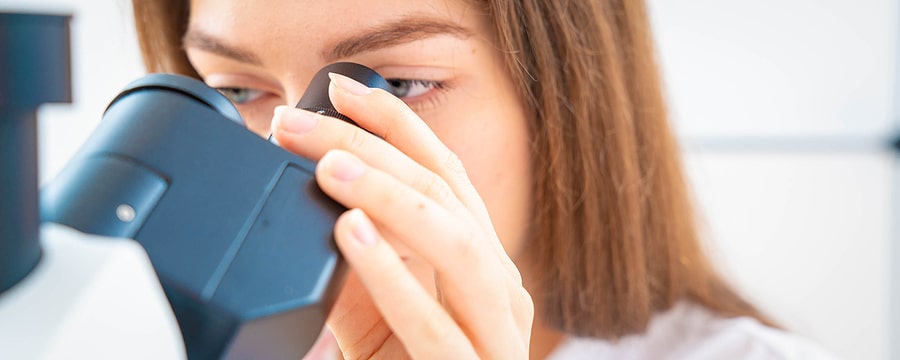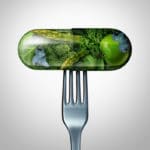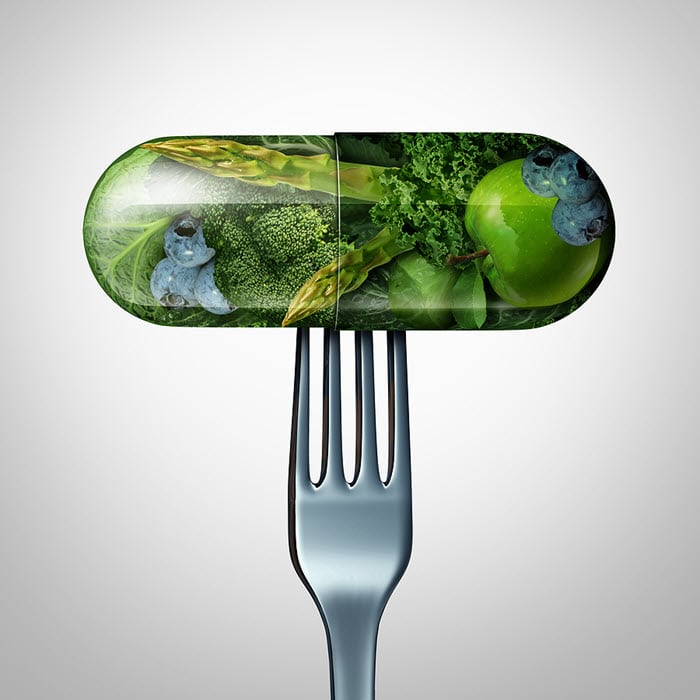Table of Contents
Sulforaphane (1-isothiocyanato-4-methylsulfinylbutane, SFN) belongs to the isothiocyanate class of phytochemicals.
The isothiocyanate group of organosulfur compounds means it contains sulfur. Sulfur is vital to your health. And is one of the most abundant minerals in your body and brain.
Sulfur is required for the synthesis of essential amino acids such as cysteine and methionine needed to produce your master antioxidant glutathione.
Sulforaphane protects your brain from oxidative stress and inflammation resulting in less anxiety, depression, and brain fog.
Sulforaphane has been shown to improve behavior in people with autism, including social interaction, abnormal behavior, and verbal communication.[i]
It plays a role in protecting your brain from Alzheimer’s disease and Parkinson’s disease.[ii] [iii] And has been shown to boost cognitive function and support healthy recovery from Traumatic Brain Injury (TBI).[iv]
Sulforaphane has been found to prevent the formation of cancer cells by supporting a healthy cell life cycle (apoptosis). And by preventing and reducing inflammation.
And has been shown to benefit people with diabetes, rheumatoid arthritis, and gastric problems.
Here you will discover how Sulforaphane is used as a nootropic for optimal brain heath.
Sulforaphane helps:
- Oxidative stress: Sulforaphane protects your cells from free-radical damage. When free radicals get out of balance with antioxidants in your body, it causes oxidative stress. Oxidative stress is elevated in several neurodegenerative diseases including autism. Sulforaphane is a powerful antioxidant that helps clean up free radicals and helps maintain a healthy brain.[v]
- Neuroprotectant: Sulforaphane also protects against cell degeneration that causes diseases like Alzheimer’s, Parkinson’s, and multiple sclerosis. By acting as an antioxidant, anti-inflammatory, and anti-apoptotic (healthy brain cell cycle).[vi]
- Anti-inflammatory: Inflammation can cause brain fog, depression, anxiety, irritability and more. Long-term inflammation can lead to neurodegenerative disease. Sulforaphane acts as an anti-inflammatory. Reducing and preventing brain inflammation.
Overview
Sulforaphane (1-isothiocyanato-4-methylsulfinylbutane, SFN) is a potent phytochemical. Phyto is the Greek word for plant. In other words, Sulforaphane is a phytochemical made by plants.
 Sulforaphane is found in cruciferous vegetables such as cabbage, kale, cauliflower, and radishes in the form of glucoraphanin and myrosinase. But it’s most plentiful in broccoli.
Sulforaphane is found in cruciferous vegetables such as cabbage, kale, cauliflower, and radishes in the form of glucoraphanin and myrosinase. But it’s most plentiful in broccoli.
Sulforaphane is synthesized in your gut through a hydrolysis reaction that involves the enzyme myrosinase and glucoraphanin.
Sulforaphane is needed to ensure your body gets enough sulfur. A mineral critical for the synthesis of cysteine and methionine which are needed to produce your master antioxidant glutathione.
Sulforaphane is one of the most frequently studied plant-derived isothiocyanate organosulfur compounds. And has been reported to provide a wide range of effects. It is antioxidant, anti-inflammatory, antimicrobial, anticancer, anti-aging, neuroprotective, and antidiabetic.[vii]
A major area of research on Sulforaphane is its effect on autism. Studies have shown that Sulforaphane improves behavior in young people with autism.[viii]
Sulforaphane can help reduce cognitive impairment associated with Alzheimer’s disease. It helps prevent potential damage that can be caused by the β-Amyloid aggregation associated with Alzheimer’s and Parkinson’s.[ix]
Sulforaphane easily crosses the blood-brain barrier. And is a powerful defense against oxidative stress and neuronal damage caused by traumatic brain injury (TBI).[x]
Studies show that if Sulforaphane is taken within one hour of traumatic brain injury it will improve spatial learning and memory and reduce working memory dysfunction.[xi]
Studies have also found that Sulforaphane may protect against changes in gene expression that if left unchecked could lead to prostate cancer progression.[xii]
 How does Sulforaphane Work in the Brain?
How does Sulforaphane Work in the Brain?
Sulforaphane boosts brain health and function in several ways. But two in particular stand out.
- Sulforaphane reduces oxidative stress.
Mitochondrial dysfunction has been associated with the accumulation of Reactive Oxygen Species (ROS) within cells, which, when not properly scavenged, may lead to oxidative stress.
Your immune system is designed to produce enzymes that scavenge ROS which prevents oxidative stress.
Immune system dysfunction has been observed in autism spectrum disorder (ASD). And high levels of ROS which causes oxidative stress are present in those with autism.[xiii]
Sulforaphane boosts your body’s antioxidant defense mechanism, which protects against oxidative stress and maintains normal and healthy cellular function.
Those with ASD who boost their intake of Sulforaphane show improvement in social communication, unusual behavior, and self-regulation behavior.
- Sulforaphane is anti-aging.
Neurological disorders are the leading cause of death and disability worldwide. And most of these disorders share mutual causes such as oxidative stress, mitochondrial dysfunction, neuroinflammation, protein misfolding, ecotoxicity, and neuronal damage.
All these disorders are common targets of the nuclear factor erythroid 2 related factor 2 (Nrf2) signaling cascade.
Nrf2 is the main regulator of redox balance and cellular detox responses and stimulates your cellular defense mechanism.[xiv]
And Nrf2 blocks oxidative stress and production of reactive oxygen species (ROS).
Sulforaphane protects against these neurological disorders by regulating the Nrf2 pathway. [xv]
So, using Sulforaphane as nootropic supplement, you get the anti-aging protection against oxidative stress, which if left unchecked can lead to Alzheimer’s, Parkinson’s, multiple sclerosis, and other neurodegenerative diseases.[xvi]
How things go bad
Sulfur is the 3rd most abundant mineral in your body. You need sulfur to build and repair your DNA. And for healthy skin, ligaments, and tendons. And sulfur protects your cells from oxidative stress.
 Sulforaphane from your diet or as a nootropic supplement provides the sulfur you need to maintain healthy cognitive function. Providing ongoing protection against neurodegenerative diseases such as Alzheimer’s disease, Parkinson’s disease, and multiple sclerosis.
Sulforaphane from your diet or as a nootropic supplement provides the sulfur you need to maintain healthy cognitive function. Providing ongoing protection against neurodegenerative diseases such as Alzheimer’s disease, Parkinson’s disease, and multiple sclerosis.
If you do not consume Sulforaphane, it can be difficult to get enough sulfur.
Putting yourself at risk for:
↓ Low levels of antioxidants which lead to free radical damage
↓ Poor signaling of antioxidant defense systems
↓ Decreased cognitive function
↑ Increase risk for neurodegenerative disease
↑ Increased oxidative stress
↑ Increased inflammation
↑ DNA damage
Supplementing with Sulforaphane can help maintain healthy brain function throughout your life.
Sulforaphane benefits
Turns out that when your mother told you to eat your broccoli, she was right!
Sulforaphane can protect your brain from oxidative stress that if left unchecked can lead to Alzheimer’s or Parkinson’s.
 Sulforaphane acts as an antioxidant which help scavenge free radicals and support a healthy immune system. And has the potential to improve some domains of cognitive function in patients with schizophrenia.
Sulforaphane acts as an antioxidant which help scavenge free radicals and support a healthy immune system. And has the potential to improve some domains of cognitive function in patients with schizophrenia.
Sulforaphane is used by men worldwide to protect against and even reverse prostate cancer. And its anti-cancer functions are now recognized as effective for possibly preventing other types of cancer as well.[xvii]
Sulforaphane has been shown to provide protection against ultraviolet (UV)-induced skin damage making it an anti-aging compound. And has potential for use in anti-aging drugs and cosmetics.[xviii]
And studies have demonstrated the use of Sulforaphane for providing protection from Traumatic Brain Injury (TBI). And is a potential candidate for therapy for Traumatic Spinal Cord Injury.[xix]
How does Sulforaphane feel?
Neurohackers report feeling energized when they take Sulforaphane. People who have been diagnosed as pre-diabetic say it helps them feel less fatigued, more energetic.
Others say using Sulforaphane as a nootropic helps their mental health. They feel an improvement in their overall feeling of wellbeing.
Many people say that Sulforaphane boosts cognitive function. They say it helps them think more clearly.
Parents of autistic children report that Sulforaphane helps their children stay calm and focused. They report improved behavior.
People with rheumatoid arthritis report that their symptoms are reduced when they consistently use Sulforaphane as a nootropic.
Sulforaphane also offers better gastric health. Some people report that it provides relief from the symptoms of GERD/acid reflux.
Neurohackers with traumatic brain injury say Sulforaphane helps reduce their feelings of anxiety.
And most report that taking Sulforaphane as a nootropic supplement is a great alternative if you don’t like eating broccoli or Brussels sprouts!
 Sulforaphane Clinical Research
Sulforaphane Clinical Research
Hundreds of clinical studies have been conducted with Sulforaphane. Researchers found benefits that range from improvement in autism symptoms to cancer prevention. And from improvement of Alzheimer’s symptoms to the reduction of diabetic complications.
Here are three conditions that Sulforaphane has been clinically shown to benefit.
Sulforaphane for autism
A clinical trial done by researchers in Massachusetts showed that Sulforaphane improved behavior in young men with autism spectrum disorder (ASD).
In a placebo-controlled, double-blind, randomized trial, 29 young men (aged 13-27) with moderate to severe ASD received Sulforaphane derived from brussel sprouts or a placebo daily for 18 weeks.
Parents and caregivers evaluated their behavior using the Aberrant Behavior Checklist (ABC) and Social Responsiveness Scale (SRS). Study doctors evaluated them using the Clinical Global Impression Severity scale (CGI-S).
The young men who received Sulforaphane showed a substantial improvement in behavior.
There was a 34% improvement on the ABC, and a 17% improvement on the SRS. Using the CGI-I measure, 46% showed significant improvement on social interaction. 54% on aberrant behavior. And 42% on verbal communication.[xx]
In another study, the same researchers looked at 57 children with ASD, aged three to 12 years old. 28 children were given Sulforaphane for 15 weeks, followed by no treatment for six weeks. The other 29 children received a placebo.
Researchers in this study found that Sulforaphane improved the behavior of children using the ABC measure. But improvement on the SRS measure was not as dramatic as in the first study. They didn’t measure the CGI-I in the second study.
The researchers pointed out that Sulforaphane is very safe. And has been shown to lower oxidation levels, improve antioxidant action in the body, increase glutathione production, and lower neuroinflammation. All abnormalities that are associated with autism.
Researchers concluded that Sulforaphane shows promise for helping people with autism. [xxi]
Sulforaphane for Alzheimer’s
Researchers are starting to propose human trials for Sulforaphane’s effect on Alzheimer’s disease. They haven’t been completed yet. But several studies involving animal subjects have been done.
In one study, 48 mice were divided into three groups. One control group, one group with Alzheimer’s disease (AD), and one group with AD being treated with Sulforaphane.
The Alzheimer’s group receiving Sulforaphane had lower levels of harmful β-Amyloid deposits in their brain. They also had higher levels of glutathione peroxidase that helps protect the brain from free radical damage.
The mice treated with Sulforaphane had better performance in a water maze and open field test. This showed that their brains were functioning better than the mice who didn’t get Sulforaphane.
Researchers concluded that Sulforaphane should be considered for use in preventing Alzheimer’s disease. And in therapy for those who already have it.[xxii]
Sulforaphane helps prevent cancer
The diagnosis of prostate cancer has increased because of increased PSA testing and an aging population. And up to 48% of cases may exhibit PSA progression after a subsequent follow up exam.
But because of the risks associated with cancer treatment many men choose a program of “active surveillance” until there is evidence of cancer progression.
The problem is there is no medical intervention for men who have chosen active surveillance that could reduce their risk for cancer progression.
Thankfully, we have a natural solution that is proving to be highly effective. And that solution uses natural nootropic supplements like Sulforaphane.
A study called the Effect of Sulforaphane on Prostate CAncer PrEvention (ESCAPE) was a randomized, double-blinded 3-arm parallel trial conducted in the UK.
The study looked at how Sulforaphane affects prostate cancer. In this study involving 49 patients, they gave broccoli soup to men with low-risk or intermediate-risk prostate cancer.
Patients were split into three groups. All groups were required to eat 300 mL of broccoli soup every week for 12 months. Broccoli contains high levels of glucoraphanin, which is a precursor to Sulforaphane.
Each group ate soup with a different level of glucoraphanin concentration. Then researchers measured gene expression in biopsied prostate tissue at the beginning of the trial. And at the end of the trial.
A change in gene expression could indicate a progression in cancer development.[xxiii]
Patients in the group that ate the highest levels of glucoraphanin had the healthiest gene expression. And showed higher levels of Sulforaphane in their circulation.
Researchers concluded that Sulforaphane helps reduce the risk of cancer progression. [xxiv]
Sulforaphane Recommended Dosage
Recommended Sulforaphane dosage is 35-60 mg per day.
But Sulforaphane supplements vary so check the label or manufacturer’s website for dosage specific to the supplement you are using.
Sulforaphane Side Effects
Sulforaphane is non-toxic and safe when consumed in its raw form from broccoli, broccoli sprouts, or kale.
 When taken as a nootropic supplement, Sulforaphane has few if any side effects if it’s taken at recommended dosages. More is NOT better and may be toxic.
When taken as a nootropic supplement, Sulforaphane has few if any side effects if it’s taken at recommended dosages. More is NOT better and may be toxic.
Sulforaphane rarely causes increased gas, constipation, or diarrhea.
Sulforaphane is safe during pregnancy or breastfeeding when taken from a whole food source. The safety of Sulforaphane as a supplement is not known during pregnancy and breastfeeding so should be avoided.
Sulforaphane is a source of Sulphur so your supplement may smell nasty depending on how it is manufactured.
Type of Sulforaphane to Buy
Sulforaphane is available in tablets, capsules, or powder. Dosage for each capsule varies widely, so read the label to know how many you need to take to get the recommended dose of 35 – 60 mg.
 Many formulations include the enzyme myrosinase. The glucoraphanin in broccoli combines with myrosinase in your gut to form Sulforaphane.
Many formulations include the enzyme myrosinase. The glucoraphanin in broccoli combines with myrosinase in your gut to form Sulforaphane.
TrueBroc® is patented form of Glucoraphanin extracted from broccoli seeds using a hot water process. This patented Sulforaphane supplement is manufactured in Baltimore and licensed to supplement manufacturers for use in their product.
Avmacol® by Nutramax Laboratories is a patented broccoli seed extract (Glucoraphanin) & Myrosimax® (active Myrosinase enzyme) which when digested produces Sulforaphane in your gut. Manufactured in Maryland and licensed to major supplement manufacturers.
BrocColinate® by Numedica uses a patented CO2 extraction method to get Sulforaphane Glucosinolate from broccoli with added Myrosinase which is a key enzyme needed to convert Sulforaphane Glucosinolate into Sulforaphane in your small intestine.
Nootropics Expert® Recommendation
I recommend using Sulforaphane as a nootropic supplement.
Your body does not make Sulforaphane on its own. You can get glucoraphanin from cruciferous vegetables or a nootropic supplement so your body can synthesize Sulforaphane using the enzyme myrosinase.
Sulforaphane plays a powerful role in cell detoxification and the regulation of a healthy antioxidant defense system.
Sulforaphane may be especially helpful in you are dealing with autism.
Sulforaphane provides antioxidant, anti-inflammatory, antimicrobial, anticancer, anti-aging, and antidiabetic benefits.
Sulforaphane as a nootropic boosts cognition, helps support recovery from traumatic brain injury (TBI), and helps regulate mood.
Sulforaphane protects against neurodegenerative diseases such as Alzheimer’s and Parkinson’s. And helps prevent cancer cell growth.
It’s safe to use 35 – 60 mg of Sulforaphane per day.
But some labels may be confusing because it will include much higher doses of the precursor glucoraphanin which makes Sulforaphane.
So always check the label for dosage recommendations from the manufacturer of the supplement.








Join The Discussion - 20 comments
Nancy
November 29, 2024
Hello David, how are you? I admire you and I would like your help with some questions. I would like to know if, having Hashimoto’s disease, I can consume Sulforaphane supplements or Broccoli Sprouts? I have heard that they have contraindications for people with hypothyroidism like you and me.
David Tomen
November 29, 2024
Nancy, they are not contraindicated and here is proof: https://pure.johnshopkins.edu/en/publications/broccoli-sprout-beverage-is-safe-for-thyroid-hormonal-and-autoimm
Nancy
December 2, 2024
Hello David, thank you very much for your help, I only have this last question, based on your experience, do you think that a person with cancer who is undergoing chemotherapy can consume Sulforaphane supplements or Broccoli Sprouts without problems?, I have read that it can supposedly interfere with the use of antiplatelet medications or anticoagulants such as warfarin according to the Prostaphane website
Thank you for your generosity and your time.
David Tomen
December 3, 2024
Nancy, read this section of the link I’m including here “Synergic anticancer effect of sulforaphane in combination with other chemotherapeutic agents” (https://pmc.ncbi.nlm.nih.gov/articles/PMC10313060/)/ According to that summary it looks like Sulforaphane compliments anti-cancer treatment. I would show this study and verify what I said with the doctor who is providing the chemo.